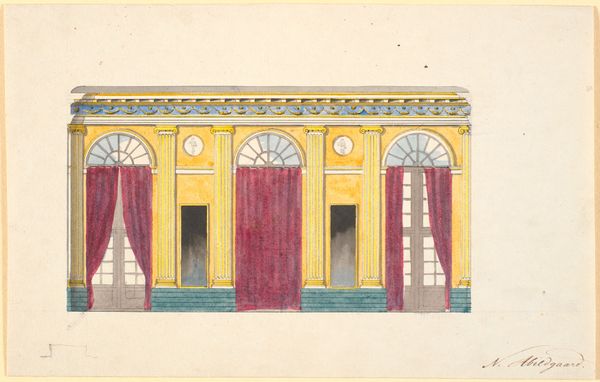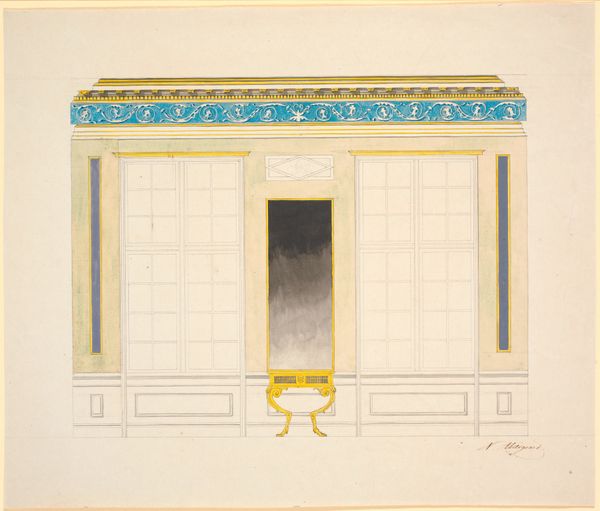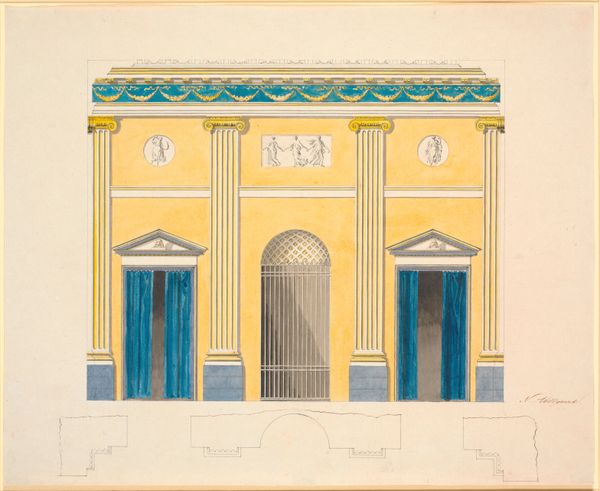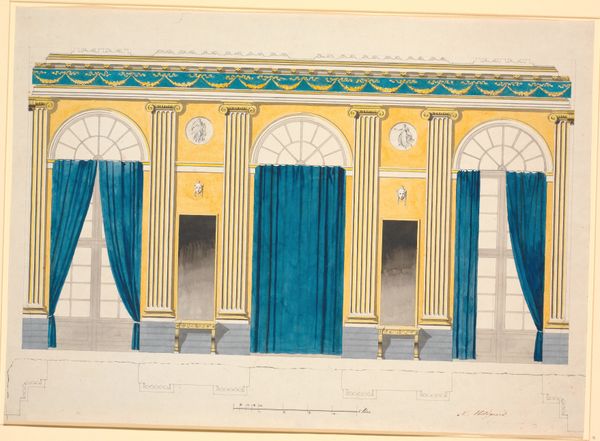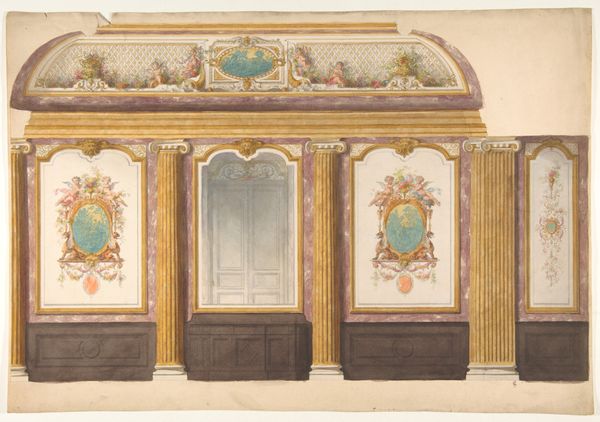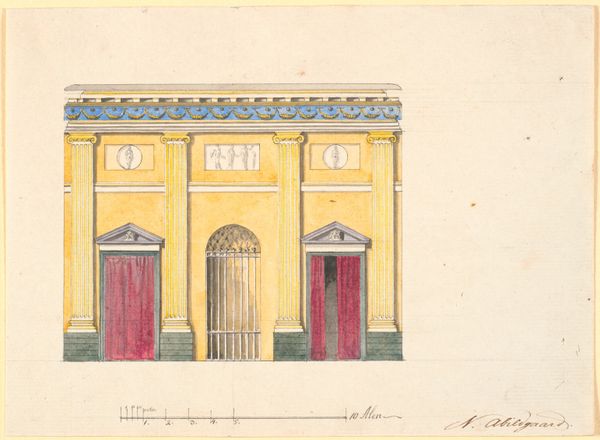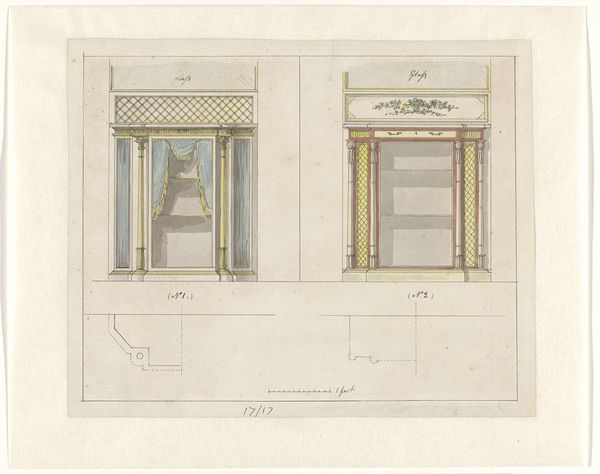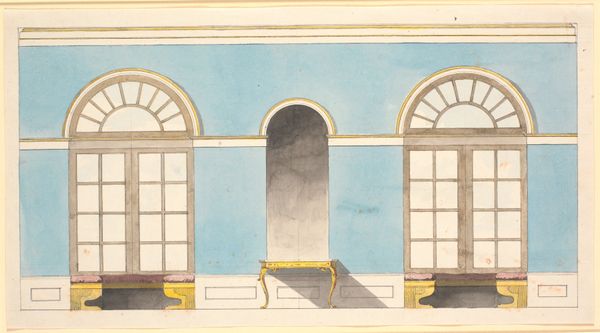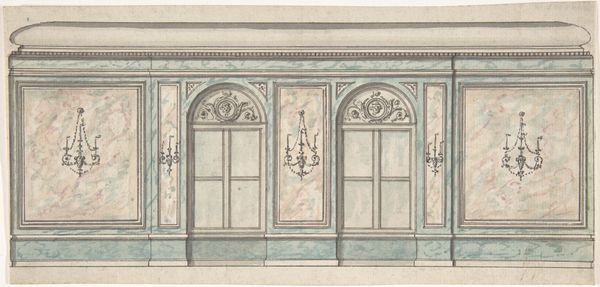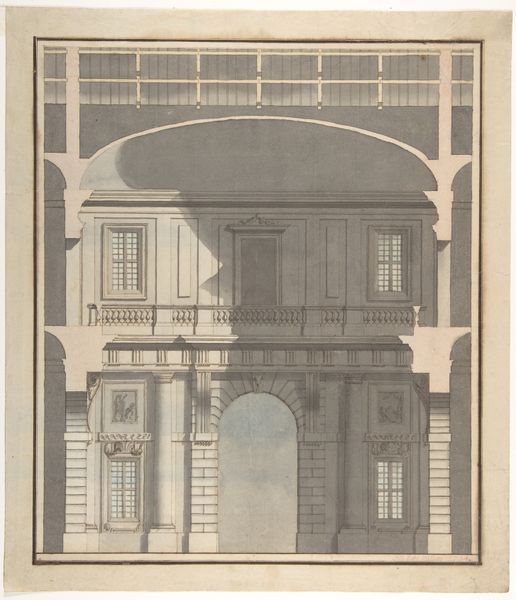
drawing, watercolor
#
drawing
#
neoclacissism
#
water colours
#
watercolor
#
geometric
#
line
#
watercolor
Dimensions: 391 mm (height) x 438 mm (width) (bladmaal)
Curator: Here we have Nicolai Abildgaard’s "Vinduesvæggen i 'det blå kabinet'", or "Window Wall in 'the Blue Cabinet'", a watercolor drawing from the 1790s. It’s currently held here at the SMK, the Statens Museum for Kunst. Editor: My initial impression is of intense formality tempered by a kind of dreaminess. The symmetry is rigid, yet the washes of color give it an ethereal quality. It feels like a stage set for a neoclassical drama. Curator: Absolutely. Abildgaard was a leading figure in Danish Neoclassicism, deeply influenced by antiquity and the Enlightenment ideals of reason and order. The blue cabinet itself was designed for Christiansborg Palace. This drawing offers insight into the visual language of power at the time, think about who had access and how it reflected aristocratic identity. Editor: Notice the geometry, the interplay of horizontals and verticals, and how the curtains function as both framing devices and independent masses of color and texture. The precise linearity is beautifully offset by the fluid drapery. There's a tension, isn't there, between the structured architecture and the almost Baroque abundance of fabric? Curator: And consider the function of such spaces. The blue cabinet would have been a site of political maneuvering, social performances, and the construction of royal identity. The careful arrangements of furniture, the play of light, all contributed to the overall effect of projecting power and authority. How the room itself would be part of a larger message to visitors, especially when reflecting on its construction after the Christiansborg Palace fire. Editor: The subtle color palette – that almost-pink wall against the intense blues and golds – is particularly striking. It's a restrained opulence, a sort of visual oxymoron. You wouldn't typically see these particular combinations, the way he utilizes complementary accent colors, shows an intense dedication to creating harmony in geometric contrast. Curator: Reflecting broader changes happening in Denmark during that era, with burgeoning bourgeois and revolutionary sentiments across Europe starting to make their ways north. An interesting thing about studying Abildgaard's work is his shift towards Romanticism near the end of his career and what it could signal to our understanding of these types of identity. Editor: It highlights the constant push and pull between structure and expression, order and freedom that's often found within artistic movements. Even within something seemingly as fixed as architecture! Curator: Exactly. It serves as a visual reminder that even within the seemingly rigid constraints of power, individual expression and shifting social undercurrents can find a voice.
Comments
No comments
Be the first to comment and join the conversation on the ultimate creative platform.
